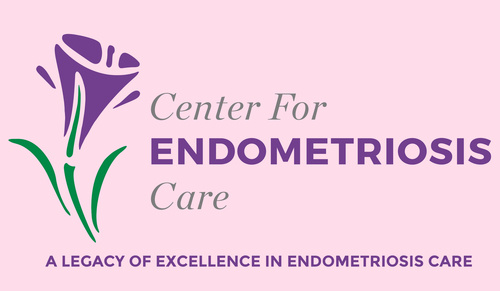© Center for Endometriosis Care/Ken Sinervo MD, MSc, FRCSC. All rights reserved. No reproduction permitted without written permission. Revised since original publication and current as of 2023. No external funding was utilized in the creation of this material. The Center for Endometriosis Care neither endorses nor has affiliation with any resources cited herein. The following material is for informational purposes only and does not constitute medical advice.
By Robert B. Albee, Jr., MD, FACOG, ACGE, CEC FOUNDER
Just as each individual with endometriosis has a case like no one else's, so too is their recovery. In other words:
There is a very wide range of "normal" recovery after Laparoscopic Excision (LAPEX) of endometriosis.
For some, much of the pain they had been experiencing before their LAPEX will disappear immediately. Such cases are explained more fully below. For others, their pain decreases at a steady rate over the coming days or weeks. For still others, pain relief seems as though it will never happen…then a very dramatic corner is turned. Often, the older a patient is and the longer they have been sick and in pain, the longer recovery may take. Of course, there are many exceptions.
Are there any guidelines as to what to expect?
First, let's discuss situations in which a patient might experience significant pain relief almost immediately.
Internal Pressure is Relieved - In the course of excision of endometriosis, it is common to encounter areas where a build-up of fluid or edematous (swollen) tissues occupy a confined space. For example, an endometrioma within the capsule of the ovary will create increasing pressure as it enlarges. Some patients have areas of endometriosis that are encapsulated by adhesions. This can result in swollen tissue that has no place into which to expand. These areas of pressure exert a stretching effect on the local nerve endings, resulting in intense pain. When we release this pressure by excising the disease, restoring normal anatomy, and removing adhesions, the pain may disappear immediately. Some individuals wake up after surgery and can tell instantly that some pain has been relieved.
Adhesions are the Binds that Tie - It is quite common with endometriosis to have adhesions holding together two structures that need to move separately. For example, an ovary moves in various ways throughout the cycle; if it is stuck down with adhesions, these attempts at movement can cause great pain. If the ovary is attached to the bowel, for example, movement of either structure is going to trigger pain, often intense. When the adhesions that are preventing independent movement of bodily structures are removed, the pain relief is often intense and immediate.
Lingering Pain - We are frequently asked why the pain doesn't go away in the first few days after surgery. After all, the reasoning goes, the endometriosis is gone, so why should I have any pain? Each area of endometriosis that is excised leaves behind a base of normal tissue, which has been uncovered of its normal peritoneal surface. This is essentially a raw tissue, which immediately becomes swollen with the body's natural response to injury. This also involves an increase in the local blood supply, and an infusion of defense cells such as plasma calls and white blood cells. This surgical "injury" requires a significant amount of time to heal.
New peritoneum must be generated to cover the raw area. The swelling must have time to subside. The patient's nerve endings can't tell the difference between endometriosis and the surgery to excise it: all they know is that something is causing them to fire, and the result can be pain.
Local Anesthesia - We routinely leave a long-acting local anesthesia in the abdomen/pelvis to help our patients with pain control. Sometimes the patient will notice an increase in pain when the medicine wears off, usually in one to three days after surgery. Overall, however, we have found that this technique still reduces the amount of pain medication a patient may need.
Post-Op Menses - Typically, the patient's next ovulation and/or period, if they menstruate, will occur during the early stages of healing. These processes can add to the factors that create irritation of already swollen tissues. It is not uncommon, therefore, for the first ovulation and period after surgery to be quite painful, in some cases significantly so. Also, the first period after surgery is often heavy, cramp, clotty, and long. Subsequent periods should become much more normal.
Take Heart…Although the tissue healing can take up to twelve weeks - longer for some individuals - and seem as though it will never happen, there is much to look forward to in terms of relief. Most individuals find that they are doing quite well around 2-3 months after surgery. However, we have had others report that they felt their healing took even longer. Healing is also not linear, with ups and downs along the way. By ninety days post-op, virtually all patients can resume normal activities. Significant numbers, however, report ongoing improvement in very small increments, for up to one full year after surgery. The key point to remember is that until all the swelling is resolved on the inside where the endometriosis was excised, there is still a source of pain in exactly the same area previously affected by endometriosis.
It is important to remember that while surgery is an event, healing is a process.
